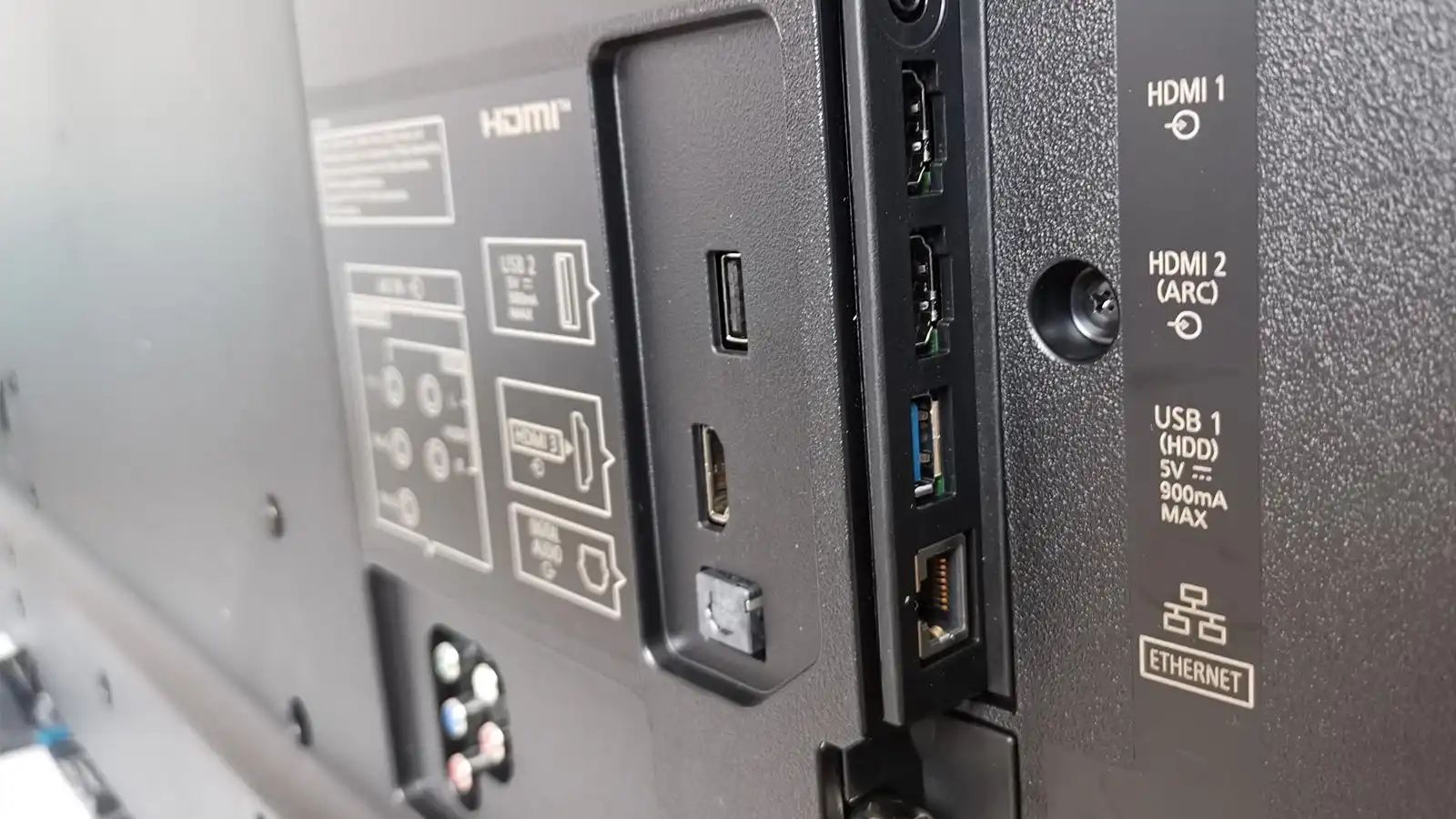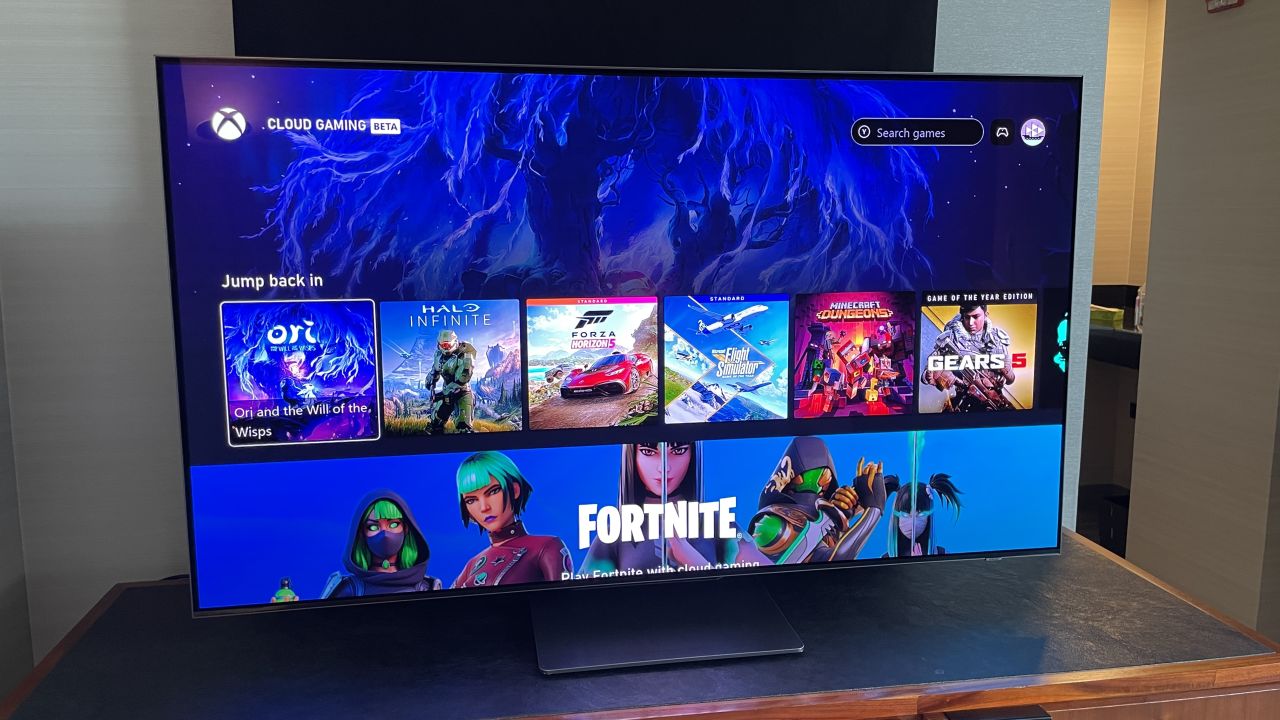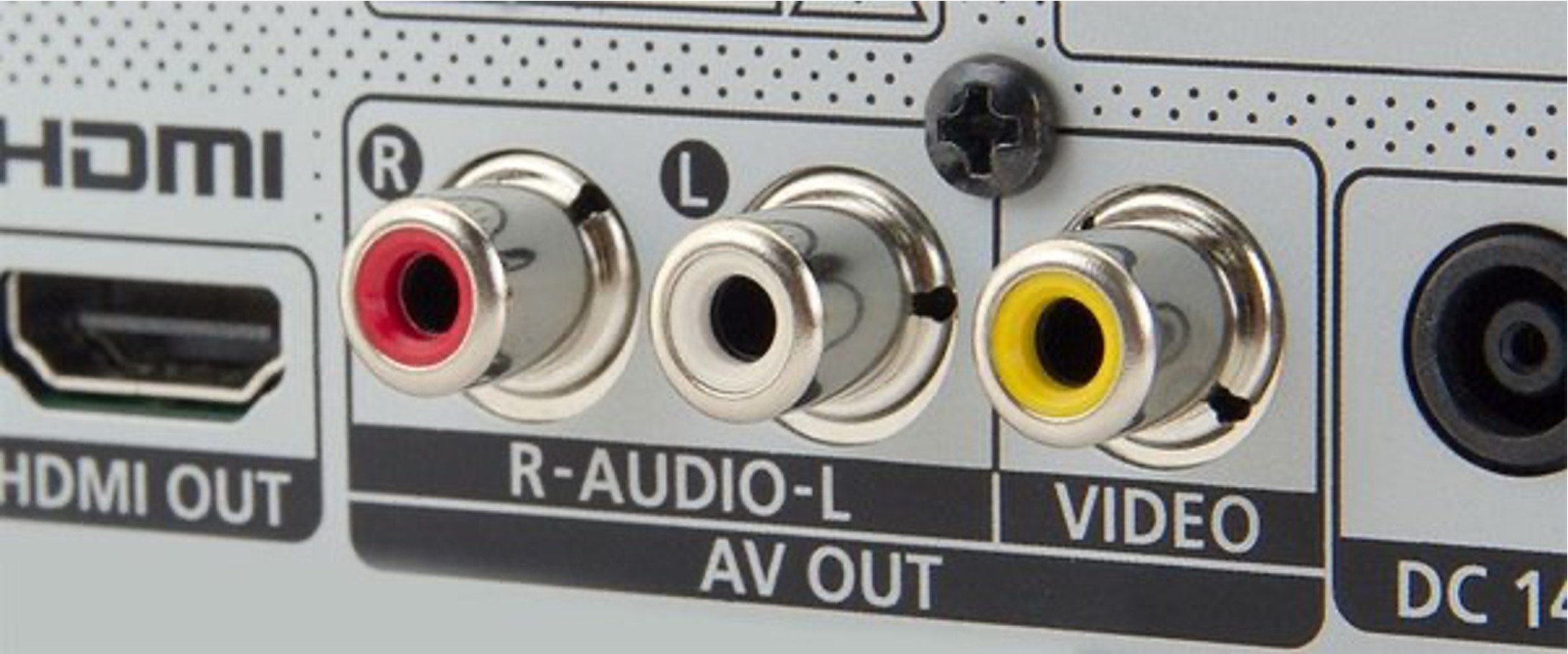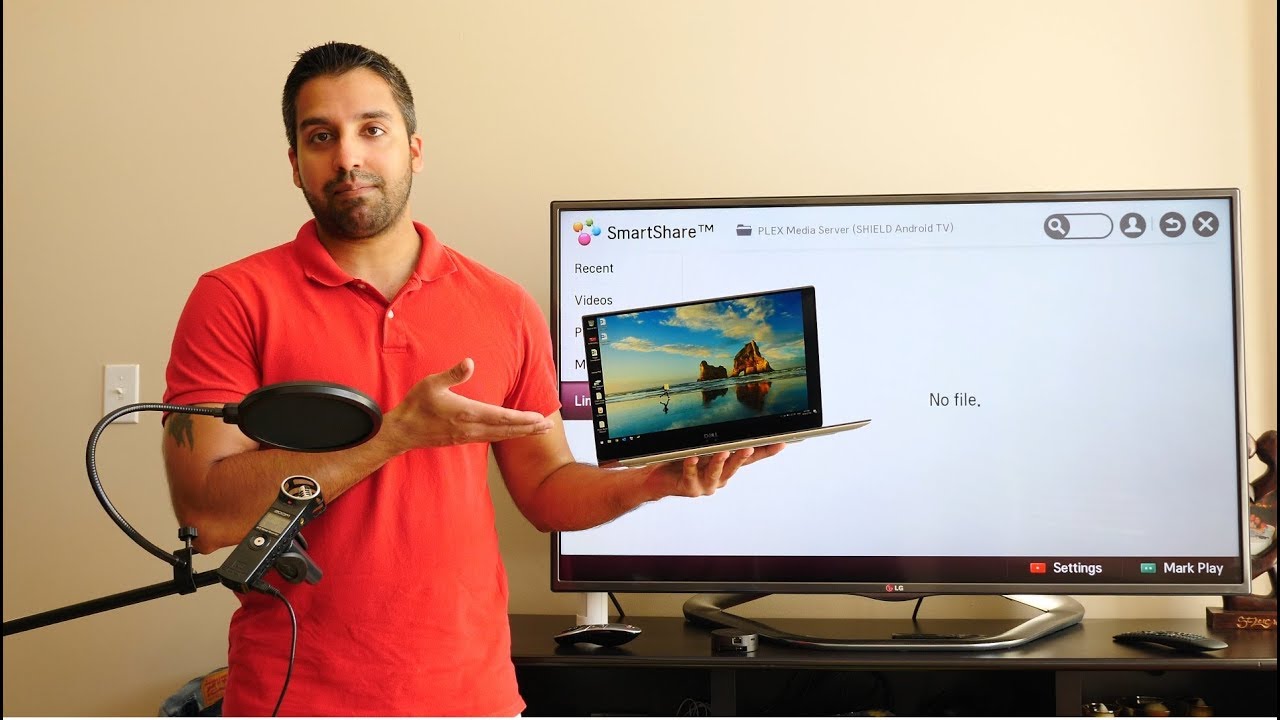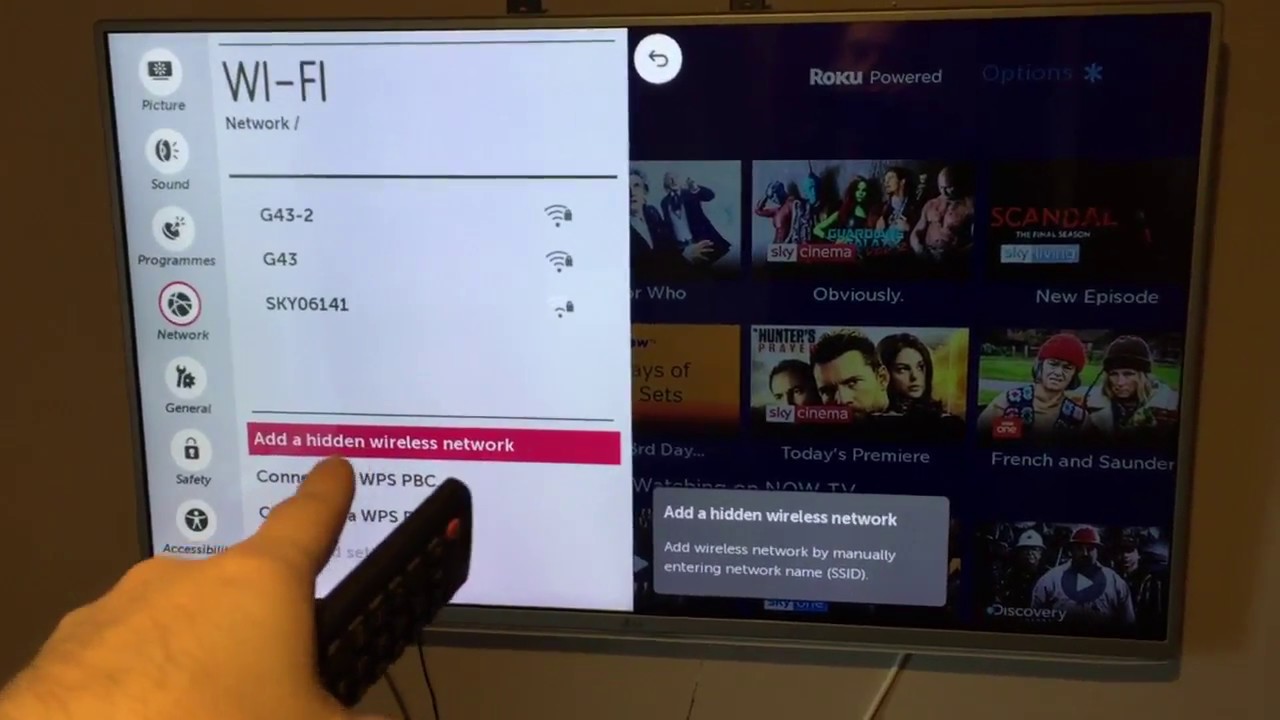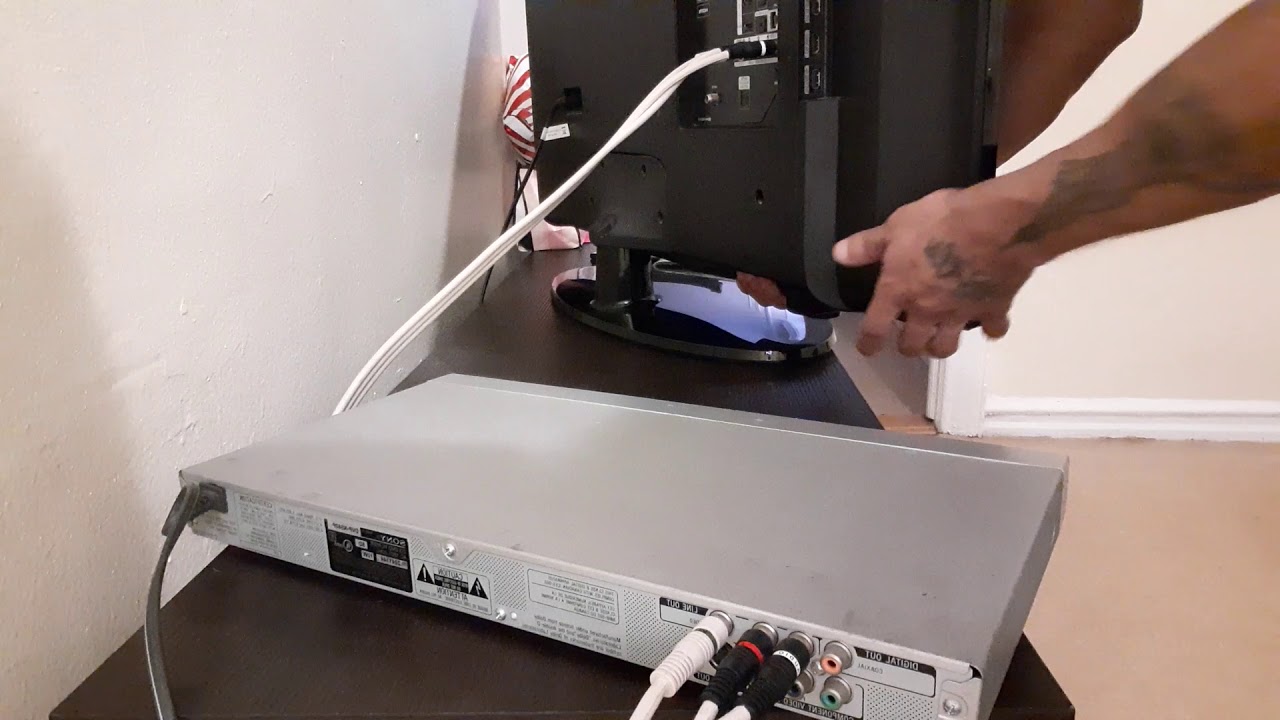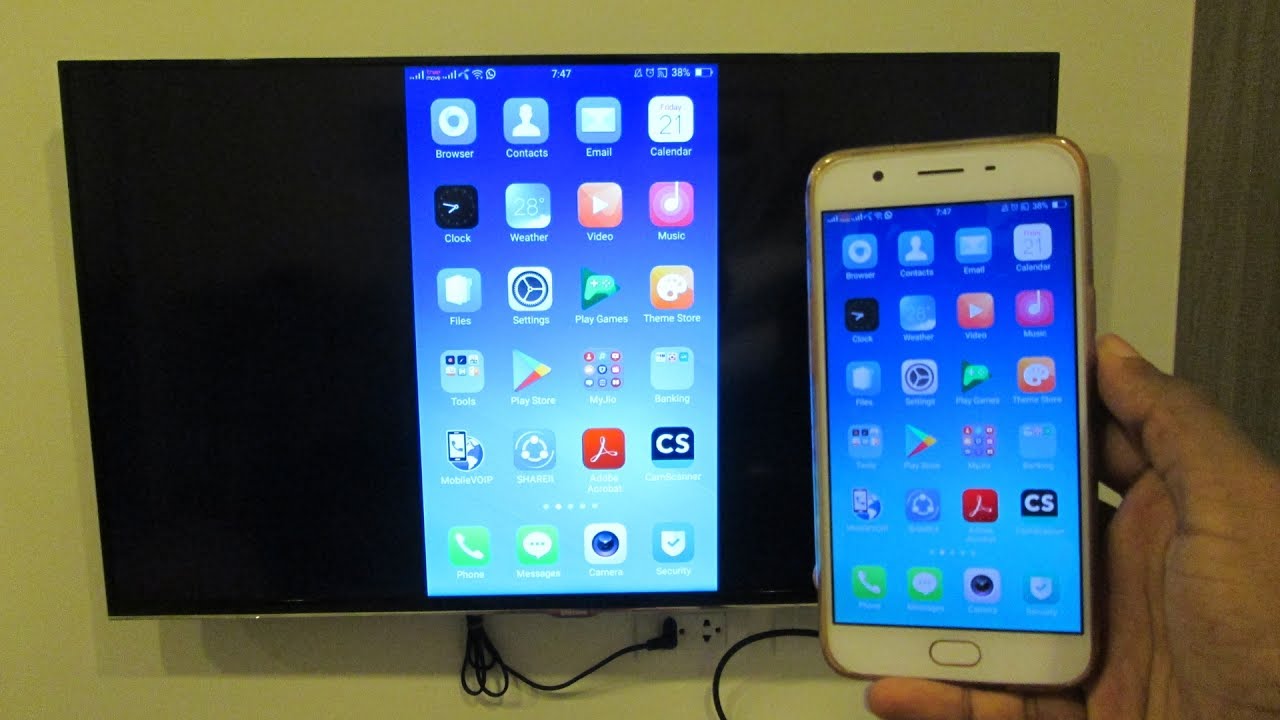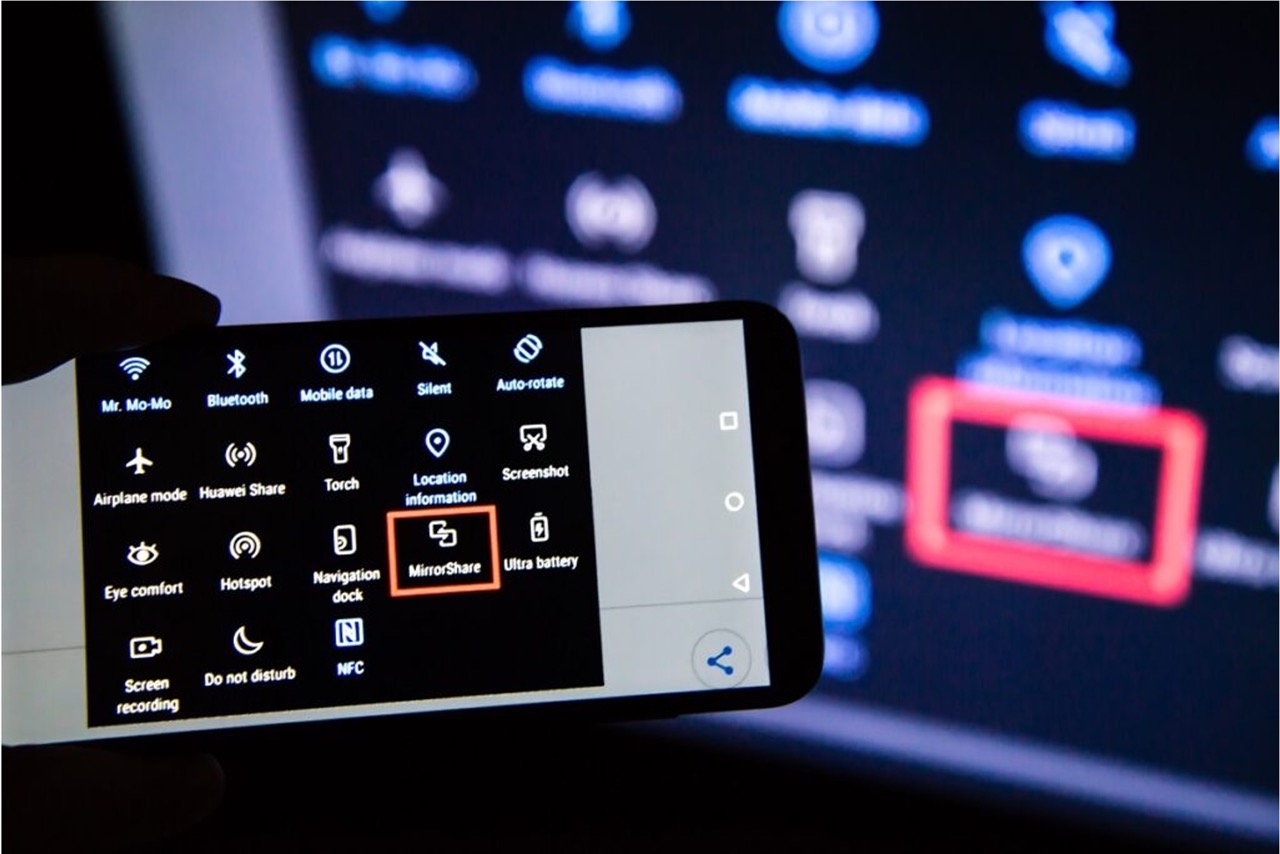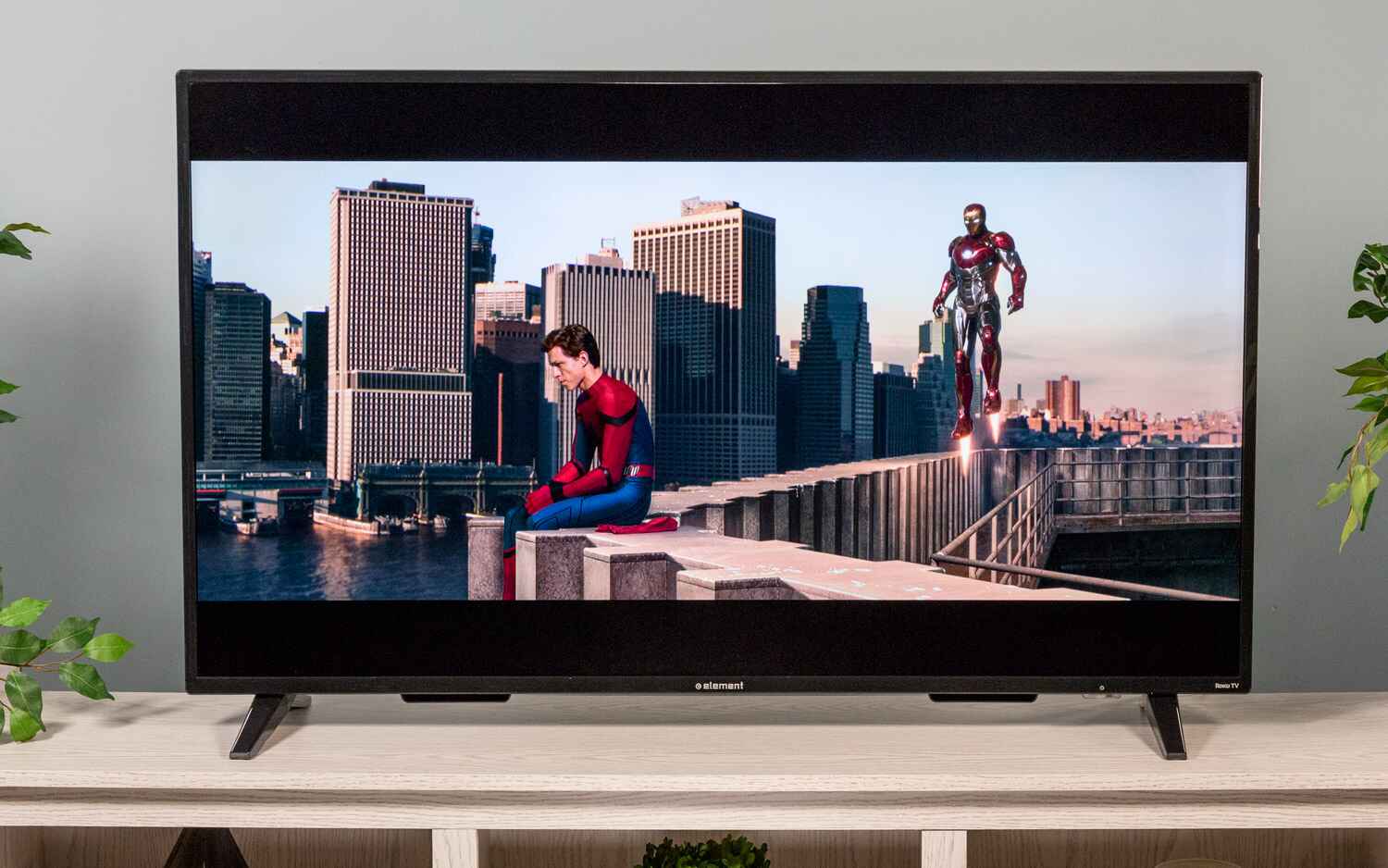Introduction
In today’s modern era of technology, LED TVs have become a staple in households around the world. These sleek, high-definition TVs offer a mesmerizing visual experience that brings movies, TV shows, and games to life. One of the key features that make LED TVs so versatile and user-friendly is the HDMI port.
The HDMI (High-Definition Multimedia Interface) port is a crucial component of LED TVs, providing a seamless connection between various devices and the television. Whether it’s connecting a gaming console, Blu-ray player, laptop, or streaming device, the HDMI port opens up a world of possibilities, allowing users to enjoy an array of multimedia content on their LED TVs.
Over the years, the HDMI port has evolved to keep up with the demands of advancing technology. From the early HDMI 1.0 version to the latest HDMI 2.1, the HDMI standard has undergone significant improvements, enabling higher resolutions, faster refresh rates, and enhanced audio capabilities.
This article explores the importance of the HDMI port in LED TVs and the benefits it brings to users. By understanding the role of the HDMI port and how it enhances the viewing experience, consumers can make informed decisions when purchasing an LED TV.
What is HDMI Port?
The HDMI (High-Definition Multimedia Interface) port is a standardized audio-video interface that allows high-quality digital transmission between devices. It serves as a single cable connection point, eliminating the need for multiple cables and simplifying the setup process. The HDMI port supports the transmission of both audio and video signals, delivering pristine visuals and immersive sound.
With the advent of HDMI technology, the previous analog connections such as component video and composite video became obsolete. HDMI revolutionized the way we connect our devices, offering a digital connection that ensures superior audiovisual performance.
HDMI ports come in different versions, with each new generation introducing improved features and capabilities. The earlier versions, like HDMI 1.0, supported standard definition and low-resolution video. However, the HDMI 2.0 and HDMI 2.1 versions brought significant advancements, enabling support for higher resolutions, faster refresh rates, and increased color depth.
Typically, LED TVs today come with several HDMI ports, allowing users to connect multiple devices simultaneously. This versatility ensures that you can connect your gaming consoles, Blu-ray players, soundbars, streaming devices, and other gadgets to your LED TV without constantly switching cables.
In terms of physical appearance, HDMI ports are generally rectangular in shape with a small slot below the wider section. These ports have small pins inside that transmit data between the connected devices. Furthermore, HDMI ports have a locking mechanism at the end, ensuring a secure and reliable connection.
Overall, the HDMI port acts as a bridge that enables seamless and high-quality digital communication between different devices. Its widespread adoption and compatibility have made it the standard connectivity option for a wide range of devices, ensuring a hassle-free multimedia experience for users.
Evolution of HDMI
The HDMI (High-Definition Multimedia Interface) technology has gone through several iterations, with each new version bringing improvements and advancements to meet the demands of evolving entertainment technology. Let’s take a closer look at the evolution of HDMI:
HDMI 1.0: Introduced in 2002, HDMI 1.0 offered a significant upgrade over analog connections by supporting digital transmission of both audio and video signals. It provided a maximum video resolution of 1080p and supported eight audio channels.
HDMI 1.3: Released in 2006, HDMI 1.3 introduced several enhancements, including support for higher color depths, expanded audio formats like Dolby TrueHD and DTS-HD Master Audio, and increased bandwidth for faster data transfer.
HDMI 1.4: In 2009, HDMI 1.4 brought additional features to cater to the emerging 3D technology and connectivity needs. It introduced support for 3D video formats, an Ethernet channel to share internet connectivity between devices, and an Audio Return Channel (ARC) to send audio signals from the TV back to an audio system without the need for a separate cable.
HDMI 2.0: Released in 2013, HDMI 2.0 addressed the rising popularity of 4K Ultra HD resolution. It increased the maximum video resolution to 4K at 60 frames per second, enabling a smoother and more immersive viewing experience. HDMI 2.0 also introduced support for wider color gamuts, allowing for more vibrant and lifelike colors.
HDMI 2.1: The latest version, HDMI 2.1, was launched in 2017 and offers remarkable improvements in terms of bandwidth and features. It delivers support for higher resolutions up to 10K, higher refresh rates of up to 120Hz, and increased bandwidth to accommodate these higher data rates. HDMI 2.1 also introduced dynamic HDR (High Dynamic Range) for more precise and vibrant HDR content, enhanced audio formats like Dolby Atmos, and a Variable Refresh Rate (VRR) for smoother gameplay.
The continuous evolution of HDMI technology has played a crucial role in delivering an immersive and future-proof multimedia experience. The latest HDMI versions have paved the way for advancements in visual quality, audio fidelity, and overall entertainment, ensuring that users can fully enjoy the capabilities of their LED TVs and connected devices.
Advantages of HDMI Port in LED TV
The HDMI (High-Definition Multimedia Interface) port in LED TVs offers a myriad of advantages that enhance the user experience and simplify the connectivity of various devices. Let’s explore some key advantages of HDMI ports:
1. High-Quality Audio and Video Transfer: HDMI allows for the transmission of uncompressed, high-quality audio and video signals. This means that users can enjoy crystal-clear visuals and immersive sound without any loss in quality, providing a truly immersive entertainment experience.
2. Support for 4K and HDR Content: HDMI ports enable seamless playback of 4K Ultra HD content, delivering stunning image clarity and detail. Additionally, HDMI 2.1 supports dynamic HDR, which enhances contrast and color accuracy, resulting in a more lifelike and vibrant picture.
3. Multiple Devices, One Connection: With multiple HDMI ports available on LED TVs, users can connect a variety of devices simultaneously, such as gaming consoles, Blu-ray players, streaming devices, and more. This eliminates the need for constantly swapping cables and simplifies the setup process.
4. Compatibility with Older Devices: HDMI ports are backward compatible, meaning they can still connect to older devices and display content at their respective resolutions. This ensures that users can seamlessly connect their older devices to LED TVs without worrying about compatibility issues.
5. Plug-and-Play Convenience: HDMI offers a plug-and-play experience, eliminating the need for complex setups and configurations. Simply connect the HDMI cable between the LED TV and the device, and it’s ready to go. This simplicity and convenience make HDMI a user-friendly choice.
6. Audio Return Channel (ARC): The HDMI ARC feature allows the TV to send audio back to a soundbar, home theater system, or AV receiver through the HDMI cable, eliminating the need for additional audio connections. This simplifies the audio setup and ensures a streamlined experience.
7. CEC (Consumer Electronics Control) Compatibility: HDMI supports CEC, which allows users to control multiple devices connected through HDMI using a single remote control. This simplifies the overall control experience by reducing the number of remotes required.
Overall, the HDMI port in LED TVs offers numerous advantages, from high-quality audio and video transmission to simplifying device connectivity. It ensures a seamless and immersive multimedia experience, making it an essential feature for modern entertainment setups.
Connecting Devices with HDMI Port
The HDMI (High-Definition Multimedia Interface) port serves as a versatile connectivity option for LED TVs, allowing users to connect a wide range of devices seamlessly. Here’s how you can connect various devices using the HDMI port:
1. Gaming Consoles: Connect your gaming console, such as PlayStation, Xbox, or Nintendo Switch, to the HDMI port on your LED TV. Simply plug in one end of the HDMI cable into the HDMI output port of the console and the other end into the HDMI input port of the TV. This enables you to enjoy immersive gaming with high-definition visuals and surround sound.
2. Blu-ray and DVD Players: To connect your Blu-ray or DVD player, plug one end of the HDMI cable into the HDMI output port of the player and the other end into the HDMI input port of the TV. This allows you to enjoy your favorite movies and TV shows in stunning high definition, with enhanced sound quality.
3. Streaming Devices: Connect streaming devices like Apple TV, Roku, Chromecast, or Amazon Fire Stick to the HDMI port on your LED TV. Plug one end of the HDMI cable into the HDMI output port of the streaming device and the other end into the HDMI input port of the TV. This enables you to stream your favorite content from various streaming platforms directly on your TV screen.
4. Laptops and Computers: Connect your laptop or computer to the HDMI port on your LED TV to enjoy a larger screen experience. Simply plug one end of the HDMI cable into the HDMI output port of your laptop/computer and the other end into the HDMI input port of the TV. This allows you to mirror your computer screen or extend your desktop for presentations, multimedia playback, or gaming.
5. Soundbars and Home Theater Systems: Many soundbars and home theater systems also come equipped with HDMI ports. Connect the HDMI output port of your soundbar or home theater system to the HDMI input port of your LED TV. This allows for enhanced audio quality and allows the soundbar or home theater system to act as the primary audio source for all connected devices.
6. Cameras and Camcorders: Some cameras and camcorders have HDMI output ports that allow direct connection to LED TVs. By connecting your camera or camcorder to the HDMI input port of your TV, you can view your photos and videos on a larger screen in high definition.
With the HDMI port’s versatility, users can easily connect a wide range of devices to their LED TVs, including gaming consoles, Blu-ray players, streaming devices, laptops, soundbars, and cameras. This flexibility ensures a seamless and convenient multimedia experience, allowing users to enjoy their favorite content on the big screen with stunning visuals and impressive audio quality.
High-Quality Audio and Video Transfer
One of the key advantages of the HDMI (High-Definition Multimedia Interface) port in LED TVs is its ability to deliver high-quality audio and video transfer. Unlike analog connections, HDMI offers a digital transmission that ensures superior audiovisual performance. Here’s why HDMI excels in delivering high-quality audio and video:
1. Uncompressed Transmission: HDMI allows for the transmission of uncompressed audio and video signals from the source device to the TV. Unlike compressed formats, such as those found in analog connections or some streaming methods, uncompressed signals retain the original quality, resulting in sharper images and more detailed sound reproduction.
2. Pristine Visuals: With HDMI, users can experience high-definition visuals at their best. HDMI supports various video formats, including Full HD (1080p) and 4K Ultra HD (2160p), enabling users to enjoy stunning image clarity, vibrant colors, and lifelike details. The digital transmission through the HDMI port ensures that there is no loss in visual quality during the transfer process.
3. Immersive Audio: HDMI ports support multichannel audio formats, such as Dolby Digital and DTS, delivering immersive sound experiences. These audio formats provide multi-speaker setups, such as 5.1 or 7.1 surround sound, enabling users to hear precise audio cues and enjoy dynamic range and clarity for movies, music, and games.
4. Enhanced Audio Features: Advanced HDMI versions, like HDMI 2.1, support additional audio features, such as Dolby Atmos and DTS:X. These object-based audio formats enable a truly immersive audio experience, where sound is precisely placed in a 3D space, creating a captivating and realistic soundscape that enhances the overall viewing experience.
5. Digital Copy Protection: HDMI incorporates robust digital copy protection technologies, such as HDCP (High-bandwidth Digital Content Protection), which prevents unauthorized duplication or piracy of high-definition content. This ensures that copyrighted movies, TV shows, and other media are protected during transmission, maintaining the integrity of the content.
Overall, the HDMI port excels in delivering high-quality audio and video transfer, providing users with an immersive and engaging entertainment experience. Whether you’re watching movies, playing games, or enjoying multimedia content, HDMI ensures that you can enjoy stunning visuals and impressive sound, elevating the overall quality of your LED TV viewing experience.
Support for 4K and HDR Content
The HDMI (High-Definition Multimedia Interface) port in LED TVs plays a crucial role in supporting 4K Ultra HD resolution and High Dynamic Range (HDR) content. These technological advancements have revolutionized the visual experience, delivering stunning picture quality and lifelike colors. Here’s how HDMI enables support for 4K and HDR content:
1. 4K Ultra HD Resolution: HDMI ports allow for the seamless transmission of 4K Ultra HD content. 4K resolution offers four times the number of pixels compared to Full HD, resulting in sharper details, more realistic textures, and improved image clarity. With an HDMI connection, users can enjoy the full potential of their 4K content library on their LED TVs without any loss in visual quality.
2. Enhanced Color and Contrast: HDMI also supports High Dynamic Range (HDR) technology. HDR enhances the contrast ratio and color accuracy, resulting in a wider range of colors, deeper blacks, and brighter whites. HDR content provides a more realistic and immersive viewing experience, with images that appear more vibrant and true to life. HDMI ports allow for the seamless transfer of HDR content, ensuring that users can enjoy the full benefits of HDR on their compatible LED TVs.
3. Expanded Color Gamut: HDMI 2.0 and higher versions introduced support for wider color gamuts, such as BT.2020 or DCI-P3, which offer a broader range of colors compared to standard color spaces. This wider color gamut reproduces more shades and hues, resulting in more lifelike and accurate color representation. HDMI ensures that the expanded color gamut is accurately transmitted from the source device to the LED TV, providing a visually stunning experience.
4. Increased Bandwidth: HDMI 2.0 and the latest HDMI 2.1 versions introduced higher bandwidth capabilities to accommodate the data demands of 4K and HDR content. This increased bandwidth ensures that large amounts of data, such as higher resolutions and frame rates, can be transmitted smoothly through the HDMI port, without any loss in quality or performance.
5. Dolby Vision and HDR10+: HDMI also supports advanced HDR formats like Dolby Vision and HDR10+. These formats offer even greater dynamic range and color performance, allowing for more precise and nuanced HDR content. HDMI ports ensure that Dolby Vision and HDR10+ content can be transmitted from compatible devices to LED TVs, providing an enhanced visual experience.
Thanks to HDMI’s support for 4K resolution and HDR technology, users can indulge in the visual splendor of their favorite movies, TV shows, and games. HDMI allows for the seamless transmission of high-quality, immersive content, making LED TVs the perfect medium to showcase the stunning details, vibrant colors, and lifelike imagery that 4K and HDR content offer.
Multiple Devices, One Connection
One of the significant advantages of the HDMI (High-Definition Multimedia Interface) port in LED TVs is the ability to connect multiple devices using a single HDMI cable. This feature eliminates the need for constantly swapping cables and simplifies the overall setup process. Here’s how the HDMI port enables users to connect multiple devices with just one connection:
1. Multiple HDMI Ports: LED TVs typically come equipped with multiple HDMI ports, allowing users to connect a variety of devices simultaneously. These HDMI ports serve as connection points for devices like gaming consoles, Blu-ray players, streaming devices, laptops, and more. Having multiple HDMI ports ensures that users can easily switch between different devices without the hassle of unplugging and re-plugging cables.
2. Seamless Device Switching: With multiple devices plugged into different HDMI ports, users can effortlessly switch between them using the TV’s input selector or remote control. This streamlined switching process allows for quick transitions between gaming, watching movies, or streaming content, providing convenience and ease of use.
3. Elimination of Cable Clutter: By utilizing the HDMI port for multiple device connections, users can significantly reduce cable clutter. Instead of having separate cables for each device, a single HDMI cable can carry both audio and video signals, simplifying the cable management and creating a cleaner and more organized entertainment setup.
4. Simultaneous Device Connectivity: LED TVs with multiple HDMI ports allow users to keep their devices connected simultaneously. For example, users can have a gaming console connected to one HDMI port, a Blu-ray player to another, and a streaming device to a third HDMI port. This versatility enables users to enjoy different types of multimedia content without the need for constant cable swapping or device disconnects.
5. Switching Inputs Easily: LED TVs typically provide a user-friendly interface that allows users to conveniently switch between the connected devices using on-screen menus or remote control buttons. This input switching functionality further simplifies the process and makes it effortless to access the desired device without any interruption.
In summary, the HDMI port’s ability to connect multiple devices using one connection is a significant advantage in LED TVs. Multiple HDMI ports eliminate cable clutter, allow for seamless device switching, and enable simultaneous connectivity of various devices. This makes it easy for users to enjoy a diverse range of multimedia content on their LED TVs without the inconvenience of constantly plugging and unplugging cables.
Compatibility with Older Devices
One of the notable advantages of the HDMI (High-Definition Multimedia Interface) port in LED TVs is its compatibility with older devices. HDMI ports are designed to ensure backward compatibility, allowing users to connect and enjoy content from older devices without any compatibility issues. Here’s how HDMI ensures compatibility with older devices:
1. Signal Conversion: HDMI ports are capable of converting signals from older devices to a format that is compatible with the LED TV. For instance, if you have an older DVD player or gaming console with analog outputs, you can use an HDMI converter or adapter to connect the device to the HDMI port of the TV. This ensures that you can continue using your older devices and enjoy them on the LED TV, even if they don’t have an HDMI output.
2. Standard Resolution Support: HDMI ports support standard-definition resolutions, such as 480i and 480p, which were commonly used by older devices. This means that even if your older devices output lower resolutions, the HDMI port can accept and display the content properly on the LED TV, ensuring compatibility and a clear picture.
3. Audio Compatibility: HDMI ports also ensure compatibility with older audio systems. Some older audio formats, such as stereo or Dolby Digital, can be transmitted through the HDMI port from the older device to the LED TV. This allows for seamless audio compatibility, enabling users to enjoy their favorite content with the existing audio setup.
4. Multiple Input Options: Many LED TVs come equipped with other input options, such as component and composite inputs, alongside HDMI ports. These additional input options ensure compatibility with older devices that may not have HDMI outputs. Users can connect their older devices using the compatible inputs and still enjoy the content on the LED TV.
5. Simplified Connectivity: HDMI ports provide a simplified connectivity solution for older devices that may have previously required multiple cables and adapters. By using compatible HDMI converters or adapters, users can consolidate the connections into a single HDMI cable, reducing cable clutter and simplifying the setup process.
With the compatibility of HDMI ports with older devices, users can seamlessly integrate their existing devices into their modern LED TV setups. Whether it’s a VCR, DVD player, gaming console, or audio system, the convenience and versatility of HDMI ensure that users can continue to enjoy their older devices without compromise.
Conclusion
The HDMI (High-Definition Multimedia Interface) port plays a crucial role in enhancing the functionality and versatility of LED TVs. With its ability to transmit high-quality audio and video signals, support for 4K and HDR content, and seamless connectivity options for multiple devices, HDMI has become the standard for multimedia connectivity.
From gaming consoles and Blu-ray players to streaming devices and laptops, the HDMI port allows users to connect a wide range of devices to their LED TVs effortlessly. This eliminates the need for multiple cables, reduces cable clutter, and simplifies the setup process, providing a hassle-free and enjoyable experience.
Furthermore, HDMI ensures backward compatibility, allowing users to connect and enjoy content from older devices without any issues. With support for standard resolutions and audio compatibility, HDMI bridges the gap between older devices and modern LED TVs, enabling users to continue using their existing devices while enjoying the benefits of the latest display technology.
With the evolution of HDMI technology, the HDMI 2.1 version brought remarkable advancements, including support for higher resolutions, increased bandwidth, and enhanced audio features like Dolby Atmos and Variable Refresh Rate. This ensures that users can keep up with the demands of the latest content formats and experience the best picture and sound quality available.
Overall, the HDMI port has revolutionized the way we connect and enjoy multimedia content on LED TVs. Its high-quality audio and video transfer, support for 4K and HDR content, compatibility with older devices, and ability to connect multiple devices using one connection make HDMI an essential feature for anyone seeking a premium entertainment experience.
So, whether you’re gaming, watching your favorite movies and TV shows, or streaming content, the HDMI port in LED TVs ensures that you can enjoy stunning visuals, immersive sound, and seamless connectivity, all in one convenient and user-friendly package.







